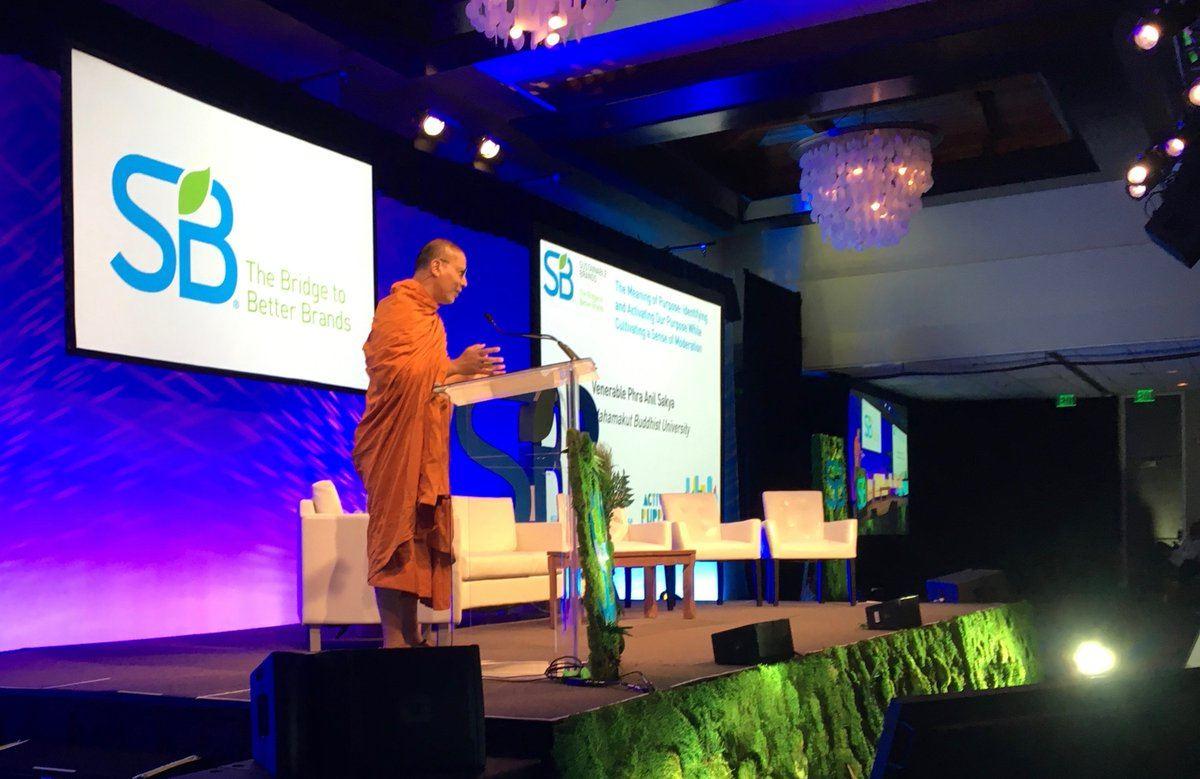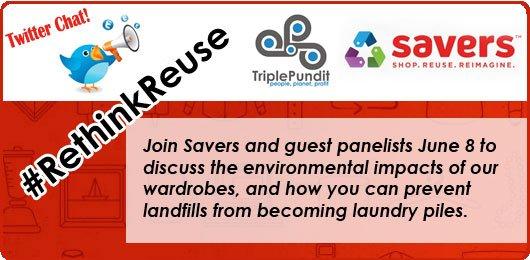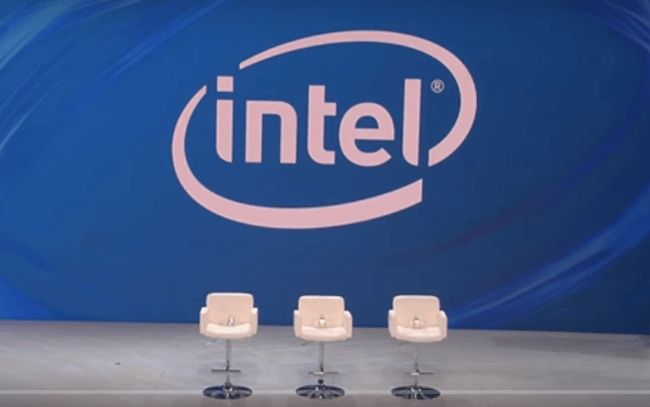BuzzFeed Takes a Stand Against Trump


In the hyper-competitive world of online news, it is hard to turn down sponsorship money. Securing online advertisers and sponsors is a Herculean task as there are plenty of platforms on which to promote a product or idea. America’s major political parties, however, have plenty of money, as do their supporting political action committees (PACs), super PACs and even Bernie Sanders’ “back-PAC.”
But Donald Trump’s war on journalists is making Richard Nixon’s vendetta against the press look like a Cub Scout gathering. Granted, at least he would not “kill” journalists, but Trump’s pledge to “loosen” libel laws is less about accountability and more about clearing the way for his personal agenda as he attempts to ascend to the presidency. Trump’s disdain for the press (unless it provides fawning coverage) has intensified as the controversy over Trump University and the judge who Trump called a “Mexican” has made him radioactive yet again amongst Republicans — just when they started to warm up to him and accept this man as their presidential nominee.
Now, one media company has had enough. On Monday the popular news site BuzzFeed announced that it terminated a $1.3 million advertising campaign with the Republican National Committee (RNC). As Politico reports, BuzzFeed’s founder and CEO Jonah Peretti decided that consideration for its employees, who would otherwise have been in a position in which they were promoting the ideas of a man who has made it clear he will do all he can to limit the freedom of the press. BuzzFeed will still cover the campaign and Trump the candidacy — it will just not accept money from the RNC.
The RNC responded in kind, with a spokesperson telling CNN that the Republicans never intended to launch an ad-buy with BuzzFeed in the first place. That strategist, Sean Spicer, also accused BuzzFeed of bias, saying it took money from Democratic candidate Hillary Clinton while highlighting the ongoing investigation by the FBI over the alleged misuse of her private email server while she was Secretary of State.
Peretti’s company-wide email to BuzzFeed’s employees, which has rapidly circulated around the Internet, concluded with this damning assessment of the Trump campaign:
“We certainly don’t like to turn away revenue that funds all the important work we do across the company. However, in some cases we must make business exceptions: We don’t run cigarette ads because they are hazardous to our health, and we won’t accept Trump ads for the exact same reason.” – BuzzFeed founder and CEO Jonah Peretti
Trump’s attack on the media is part of an emerging trend in which extremely wealthy people have become determined to silence those whose views they either abhor, or to punish journalists who have portrayed them in a negative light.
Trump supporter Peter Thiel, for example, reportedly bankrolled Hulk Hogan’s “sex tape” lawsuit against the media site Gawker. As the Guardian reported, Thiel was also a supporter of James O’Keefe, the conservative filmmaker whose work contributed to the demise of the advocacy group ACORN and the resignation of NPR’s CEO. Thiel’s actions scored a public rebuke by Amazon founder and Washington Post owner Jeff Bezos, whose funds have transformed the Post into one of online media's most prolific news sites. Nevertheless, the odds are high that the ilk of Trump and Thiel will continue as these men, instead of using the art of persuasion to change hearts and minds, will instead use their checkbooks to muzzle people with whom they disagree.
There have always been screams that the sky is falling from opponents of certain political leaders over the years. For every polarizing president who has had an enormously consequential impact on the U.S., including FDR, Nixon, Reagan, George W. Bush and Obama, plenty of critics alleged that the country we have known and loved it is now gone forever. But Trump, with his calls to build a wall and ban followers of the world’s largest religion from entering the U.S., has embarked on a journey that even many Republicans say could threaten this country’s ideals and security. And that is why many in the media will continue to push back against this man, and push back hard.
Image credit: Gage Skidmore/Flickr
Uber’s Subprime Auto Scheme Is the Last Nail in the Sharing Economy’s Coffin


Perhaps we should finally call the sharing economy the exploiting economy.
Uber has taken the gig economy to a new level with an announcement that its investment from Wall Street financiers, including Goldman Sachs, will result in the rapid expansion of Xchange Leasing, the ridesharing company’s car leasing division. Uber makes it sound easy. All you have to do is fork over $250, choose the model of car you wish to drive, sign a 36-month lease, and you have the means to make extra money driving around town.
Uber even says each automobile lease includes free oil changes, tire rotations and an occasional air filter replacement. These terms, however, only come into effect if the driver agrees to weekly payments that Uber will automatically deduct from their “Uber earnings.” If the driver cannot make enough money from schlepping people across town, too bad — the car is repossessed. And as Bloomberg reports, not only does Uber pocket that $250 deposit, but if the driver decides he or she wants to buy the car, they will have to pay thousands of dollars to compensate Uber for the residual value of the car — a car that will be beaten up from endless months of stop-and-go city driving.
From a business perspective, Uber does not have much choice but enter the car leasing business if it wants to grow and come close to meeting investors’ expectations. The ridesharing company is one of several Silicon Valley “unicorns” -- companies with valuations that are assessed far too high when compared to revenues. And as long discussed here on TriplePundit and many other media outlets, Uber has a contentious relationship with its most valuable asset: its employees. More municipalities, such as Austin, Texas, are considering kicking Uber to the curb for the company’s stubbornness, its refusal to comply with local safety regulations and its notorious labor practices. Meanwhile, the company has reduced its fares, with Think Progress suggesting earlier this year that 60 percent of Uber’s drivers at any given time are considering quitting the company.
Furthermore, as Houston Chronicle business columnist Chris Tomlinson pointed out, Uber’s venture into the car leasing business is arguably one that is predatory. Uber has seen a boost of drivers in Houston, which was hit hard by layoffs within the city’s energy sector. The nation’s fourth largest city is also massively sprawling with limited public transportation options, so Uber and other ridesharing companies are a perfect fit for residents who need to make those quick trips to the office or store. Xchange Leasing’s business model, however, does not rely on conventional economic rules of supply and demand within the market -- it is dependent on customers who have poor credit and cannot lease or buy a car through the banks or automobile finance companies.
And while Uber (and its largest competitor, Lyft) insist that its employees are independent contractors and form 1099-filers who are not entitled to any work benefits, the company insists on dictating hours, rates and, now, even owns the property that its drivers must use in order to work. Even more bothersome is the lack of transparency. Uber makes it sound as if its leases are ideal with terms that are easy to understand; Bloomberg reports the leases are 28 pages long, making it easy for poorer, less educated and desperate citizens to sign something that, in the long term, they really do not want and cannot afford.
Few people outside of Uber and Goldman Sachs are impressed. “Sounds awfully predatory,” says Lauris Bliss of CityLab. “Modern-day sharecroppers,” adds Sarah Leberstein, an attorney with the National Employment Law Project, in an op-ed in Quartz.
Uber’s push to sign up desperate people with the promise of easy money is eerily similar to the widespread foreclosure crisis that began to boil over a decade ago. True, if this billion-dollar venture fails, its effects will not come even close to the impact the 2006-2009 housing fiasco had on the U.S. and the global economy. But one way or another, if this scheme collapses, consumers will pay for this greed-inspired plot with higher banking fees or automobile prices, while more workers become even more frustrated as they see limited options for gainful employment. And the sharing economy, once viewed as a way to maximize resources and supplement income, will be seen as a movement that ended up enriching a few while enraging many.
Image credit: Senator Mark Warner/Flickr
Monk Brings a Sobering Message of Moderation to Sustainable Brands


On the opening night of the 2016 Sustainable Brands conference, the venerable Phra Anil Sakya, buddhist monk and professor at Mahamakut Buddhist University, took to the stage. He came to share an important reminder with a group of sustainability professionals who were quite literally wiggling in their seats waiting for the networking happy hour to begin. Moderation should rule all our actions, Dr. Phra said. He pointed to capitalism as the root of our problem:
"Advertisements stole our identity. They tell us what we need and that is where it stole our identity. That’s where we lost our purpose."
Because advertising tells us what to want, what to work for, and what to achieve, we have lost the ability to figure that out for ourselves, he continued. Our purpose has quite simply been waylaid by the pursuit of more, more, more.
“Your purpose in life is to find your purpose and give your whole heart and soul to it. When we don’t have a purpose, it’s a great tragedy." Dr. Phra wondered aloud whether one can even be human absent this centering mantra.
But purpose isn't the endpoint; it's the beginning of a personal journey. And a purpose is not static -- obviously our "life's work" purpose can differ from the purpose we bring to a day's work or an hour's work. That's why we need moderation.
"Sometime you go to the next room to pick up something and think, 'Why am I here?' If you don't know, you lack purpose."
"This is why we need to activate our purpose!," he exclaimed to audience titterers. "Purpose is the beginning not the end. In order to get to the beginning, we need to do a few things. One of the things is moderation." He admits that moderation is an easier challenge for him than for us.
"When I announce this, many people may turn off because in my life I can talk about moderation very proudly. In the morning I wear this robe," he gestures to his orange garment. "In the evening at dinner I wear this robe. At night I wear this robe as a blanket. I do not have trouble deciding what to wear. I do not have this trouble. For many people, moderation is a negative word."
But moderation doesn't have to be a negative word. In fact, moderation is absolutely necessary to living with purpose because it keeps us from becoming obsessed. Moderation keeps us enjoying our life of purpose.
"Of course we want to change this world. How can we make this world a new sustainable world? Everyone here has the same goal. Can we make it this day, this year? No. But that doesn’t mean that we give up. We are limited by technology, resources." It has to be enough to do your best.
Moderation keeps us mindful of our own limited influence, which keeps us balanced.
This definition of moderation was not the one we expected to hear at a conference on sustainability. Usually we are chided to think carefully about our own consumption. This definition is not at odds with Dr. Phra's. He believes moderation starts with a choice of how to spend our time and carries through to all of the decisions we must make to live our lives.
Of course, the message of moderation also extends to our purchasing practices as individuals and to our roles inside sustainable organizations. Moderation from a consumer standpoint is crucial in a world where natural resources are rapidly diminishing. But it is also important for passionate professionals to remember as we work day and night to make every brand a sustainable brand. We need to be mindful of protecting our health and well-being so that we can live to fight another day.
Mindful that his audience is largely American, Dr. Phra provided us with a memorable list he dubbed the "four keys to achieving success in life," (perhaps he lived a past life as a blogger):
- Purpose
- Perseverance
- Attention
- Perspective
Much like a your average listicle, these words mean little without the commentary that goes along with them:
Life without purpose is nothing, Dr. Phra said. However, "If you If you have purpose but no effort it is a dream," he explained. If you persevere without purpose and perspective, you lose your mind. You don’t know what you are doing because you are distracted by so many things. Attention brings focus. Perspective shows us the larger picture and allows us to act rather than react.
These lessons, so simple from the man in the orange robe, are some of the hardest for Westerners to keep with us at all times, especially with constant pings from our mobile devices alerting us to things we may or may not care to understand and the call of new people to meet and wines to sample in the networking break. Keep it in mind the next time your phone pings with the announcement of a new email.
Image credit: Sustainable BrandsThe Venerable Phra Anil Sakya #SB16sd#ActivatingPurpose#Buddhismpic.twitter.com/jDQjVblcZH
— Sustainable Brands (@SustainBrands) June 7, 2016
Big Pharma Blocks Heroin Vaccine, Cites Insufficient Profits


By Jerry Nelson
Imagine an anti-smoking vaccine. Persons wanting to stop would light a cigarette and feel ... nothing. How about a vaccine against heroin addiction, one that would prevent heroin addicts from enjoying the high?
Neither are imminent, and the anti-smoking vaccine is the only one that is even in the "testing pipeline." While scientists have focused their vaccination efforts on diseases such as smallpox, diphtheria and polio, they have been slow to work on stigmatized vaccines for people in the grip of substance abuse.
Big Pharma has turned their noses up at addiction vaccines because they are apt to be the one-shot products that take in petty cash compared to the billions companies rake in with high-cholesterol pills and other products that demand continued use. Addiction is a marketer's nightmare, and that doesn't convince the pharmaceuticals to help either.
The soon-to-be-orphaned drug is not a victim of just Big Pharma's greed, but also snobbery in unexpected places: scientists and sobriety veterans.
The consensus appears to be that a vaccine for addiction is a fool's mission. There is also more than a slight disapproval of the goal itself: a judgment that would be condemned as bigoted if it was against a vaccine for AIDS or cancer.
Professor Kim Janda, director of the Wirm Insitute of Medicine, published his research into a vaccine that could stop heroin addiction in its tracks.
Janda's research will never deliver it to market. Federal and private research funding have neglected the work. "We are not anyplace close to human tests," Janda said. "No one aspires to pay for them."
The initial study was backed by Scripps Research, the Pearson Center for Addiction and the National Institute of Health. With the positive outcomes, experts felt that receiving the funding from the government — or a pharmaceutical company — would not be an obstacle.
The experts were wrong.
Notwithstanding outreach by Janda, the NIH isn't moving. Neither has any pharmaceutical corporation. Their consensus is that there is no profit in backing a heroin vaccine.
"I have talked to multiple companies," Janda said. "They don't feel there is worth for their business; they don't distinguish it from the viewpoint of the higher good."
Even Scripps Research is of little help. The institute does not provide ongoing support for research ventures other than lending a powerful name and first-rate laboratories. It still forces researchers to look for funding on their own.
Despite the need and the market, William Burfitt, director of Scripps' Office of Philanthropy, said: "To nurture any concept from lab to store can take as long as 20 years and come with many hurdles."
Donors are slow to sign checks for a plan that focuses on any illicit drug. "People plain don't want to talk about it," Burfitt said.
Bill Gates would not be shocked by the challenges Janda has faced. Gates once said that vaccines are not a priority for pharmaceutical firms: "If 20 years ago you asked how significant are vaccines to the pharmaceuticals, they would have said their business is doing well as it is." Gates then put incentives in place for Big Pharma to work with his foundation in producing vaccines for ailments that hurt developing nations.
Janda hasn't approached the Gates Foundation for support. The Gates Foundation will maintain direct costs, but not indirect costs — such as covering costs for paper pushers, custodians and paying the electricity bill.
"They won't cover the costs that we need. We can't get their money because then we can't finance the indirect expenses," Janda said.
Image credit: Flickr/Mr. Theklan
Jerry Nelson is an American writer and photojournalist and is always interested in discussing future work opportunities. Email him at [email protected] and join the million-or-so who follow him on Twitter @ Journey_America.
New Partnerships in Forest Ownership


By Mik McKee
On May 10 the World Forestry Center hosted the Northwest Community Forest Forum (NWCFF). This group was created to address the increasing pressure on northwest forests from population growth, fragmentation and development, and is united by the belief that: “long-term, secure community control and tenure of local forests, leads to enhanced stewardship and multiple public benefits.”
The following week, a number of conservation finance experts convened for two days of discussion and networking at the Conservation Finance Network’s Practitioners Roundtable. While more broadly focused than the NWCFF, the general belief that sustainably-managed working lands provide direct ecological and economic benefits to the communities in which they are located was a key element of their conversation. The intersection between these two groups is clear, and in several instances conservation finance practitioners have partnered with local organizations to establish community forests. However, there is a degree of tension in this partnership. Communities and organizations working to acquire forestland and establish community forests need low-cost capital in order to achieve the community management and economic development goals they seek. Conservation finance practitioners, on the other hand, need projects capable of providing the returns their investors expect. While both groups have worked hard to find ways to collaborate, successful partnerships have not been as common as either would like. However, changing trends in forestland ownership may present an opportunity to change this paradigm. Starting in the early 1980s, many large, vertically-integrated timber companies began selling off their lands and focusing solely on manufacturing forest products. Concentrating on manufacturing proved to be more efficient and profitable than owning and managing both forestlands and manufacturing facilities. Timberland divestment created an opening for a new type of forestland owner called Timberland Investment Management Organizations (TIMOs). In the most basic sense, TIMOs manage timberland investments for institutional investors and high-net worth individuals, with the primary objective of maximizing investor returns. A number of different factors, including significant tax benefits, make TIMOs an attractive option for investors, and over the past 25 years TIMOs have played a large role in forestland ownership and management. Transactions in the U.S. peaked at about 8.5 million forested acres in 2006, but have fallen to approximately 2.5 million acres annually for the past six years following the great recession. While increasing global demand for forest products, mostly from Asia, continues to fuel investments in the Untied States, and new manufactured wood products like cross laminated timber and research into biofuels derived from woody biomass represent promising opportunities for investors, small cracks are starting to appear in TIMOs’ investment strategy. The National Council of Real Estate Investment Fiduciaries (NCREIF) tracks quarterly returns on timberland investments made by tax-exempt institutions, primarily pension finds. The long-term trend on these investments is negative, suggesting that the size of returns is decreasing. This is partly due to the fact that there are fewer integrated timber companies selling off land, and so it has become common for TIMOs to sell to other TIMOs. These transactions are increasingly sophisticated, and TIMOs have learned to get maximum value out of the deal. In response to these trends, a report produced by New Forests suggests that while North America will remain a significant region for timberland investment, investors will start looking towards emerging forestry markets in South America and Asia. If these cracks continue to expand, there will be real opportunity for conservation finance practitioners to partner with organizations seeking to establish community forests. These two groups already share a similar vision about the benefits locally owned and managed forests provide to their respective communities. Low-cost financing mechanisms, like access to State Revolving Fund Loans, payments for working forest conservation easements, and financing based on the future value of carbon offsets, are new tools that support these partnerships. The remaining question is whether these groups will be creative enough to seize this opportunity during times of changing forest ownership. Image credit: Flickr/Jeongho Daniel Cha Mik McKee is the Senior Forestry Analyst for The Climate Trust.Changes in Newsweek Green Rankings for 2016


Newsweek released its 2016 Green Company rankings last week, which assess the top 500 companies by market capitalization, both globally and in the U.S., for corporate sustainability and environmental impact. The rankings, which are based on the year 2014, are interesting for a number of reasons.
The highest ranked company in the world is Irish pharmaceutical giant Shire PLC, which received a score of 87.7 percent out of a possible 100. In the U.S., however, Hasbro, the toy company, was ranked No. 1 with a slightly higher score of 88.1 percent. Hasbro did not make the global list because it isn’t big enough.
These two companies fared well elsewhere, though not necessarily at the top of the heap. Hasbro was ranked third in CR magazine’s list of 100 Best Corporate Citizens, coming in behind Microsoft and Intel (PDF). Meanwhile, Shire was ranked No. 2 among pharmaceuticals in Global 100 Sustainability Index.
These small discrepancies show that the rankings are pretty consistent, though not an exact science. Of course, it all depends on the criteria used and the weighting of those criteria.
The Newsweek poll was developed in collaboration with Corporate Knights, HIP (Human Impact + Profit) Investor Inc., and leading sustainability minds from nongovernmental organizations and the academic and accounting communities including L. Hunter Lovins and William McDonough.
While the partners this year were new, the criteria remained the same. They were based on eight indicators, listed here with their respective weightings.
- Combined energy productivity (15 percent)
- Combined greenhouse gas productivity (15 percent)
- Combined water productivity (15 percent)
- Combined waste productivity (15 percent)
- Green revenue score (20 percent)
- Sustainability pay link (10 percent)
- Sustainability board committee (5 percent)
- Audited environmental metrics (5 percent)
More details of the scoring methodology can be found here. The largest item, the green revenue score, was determined by HIP (Human Impact + Profit) Investor. It relates to the portion of each company’s overall business, in terms of sales, that can be considered green.
The ratings are based on the core principles of transparency, objectivity, public data, comparability, engagement and stakeholder feedback.
When comparing the U.S. and global rankings, it’s interesting to note that only one U.S. company, second-ranked Nike, made the global top 10. Rounding out the U.S. top 10 were: Hershey, NVIDIA, Biogen, Ecolab, Rockwell Automation, MetLIfe, Coca-Cola and Oracle. Global sustainability leaders were: Shire (Ireland), Reckitt Benckiser (U.K.), BT Group (U.K.), Swisscom (Switzerland), Essilor International (France), Nike (U.S.) Unilever (Netherlands), Sky PLC (Multiple), Siemens AG (Germany) and Schneider Electric (France).
Of course such a list cannot be without contention. Assumptions must be made as to what to include and what to ignore. This list normalizes a company’s consumption and waste as a percentage of sales. That means that if a company sells enough product, it can use a tremendous amount of energy and generate copious amounts of waste and still be considered green.
Also overlooked are controversial topics like genetically modified foods, or for that matter, a company’s reputation. Monsanto ranked 22nd in the global ranking and 12th in the U.S., beating out companies like Apple, PG&E, CVS Health, Autodesk, Microsoft, HP, Novo Nordisk and numerous others that might more readily come to mind when it comes to sustainability.
That’s why rankings like this will always be somewhat subjective, since there will never be absolute agreement about what matters most.
The fact that energy efficiency and greenhouse gas productivity only account for 30 percent of the total score, when in the same issue of the magazine is a story entitled, “Melting Permafrost is Turbocharging Climate Change,” might strike some as ironic. If we could travel ahead in time and see how things will be 20, 30, 50 years from now, we’d have a better idea whether they got these ratings right. My sense is that there is a little too much business-as-usual thinking and too much weight on revenue, compensation and board composition. Not that these things aren’t important, but they are primarily tweaks that are really only needed if the company doesn’t already get it.
Still, there is potentially great value in the fact that many companies will aspire to achieve a higher rank and will modify their behavior accordingly. Participation in the survey is not optional, which means that if you’re big enough, you’re going to get ranked -- like it or not. With the rising importance of reputation, that's definitely leverage.
Image credit: Flickr/Mike Flemming
Twitter Chat Recap: #RethinkReuse with Savers


Today, Savers and guest panelists came together on Twitter at #RethinkReuse to discuss the environmental impacts of our wardrobes, and how we can prevent landfills from becoming laundry piles.
Savers, a global purpose-driven thrift retailer, was founded more than 60 years ago on a commitment to reuse. In the last year alone, Savers helped divert more than 650 million pounds of used clothing and goods from landfills.
Today, during the Sustainable Brands conference, Savers launched its State of Reuse Report -- which examines consumer attitudes and behaviors regarding reuse, particularly around clothing and textiles. A key finding of the report is that there are barriers to donating used goods and misconceptions around donating and shopping thrift, leaving an opportunity to further educate the public. The purpose of this report is to raise awareness about textile and clothing waste, sparking a conversation that helps identify ways to spur people to “Rethink Reuse.”
During #RethinkReuse, we discussed the following, and much more:
- How people, businesses, governments, sustainability and nonprofit organizations can provide solutions to combat the environmental impacts of clothing waste
- The surprising data and findings from Savers’ State of Reuse Report
- How Savers is now at the center of the conversation through engaging with thought leaders on reuse in the U.S. and Canada
- How Savers encourages the public to donate used goods to nonprofit organizations and to shop thrift
FEATURED GUESTS:
- Tony Shumpert (@SaversVVillage) - VP of Recycling and Reuse, Savers &Value Village
- Zem Joaquin (@EcoFabulous) - Founder, Near Future Summit & Ecofabulous.com
For more information, please visit www.savers.com. TVI, Inc. d/b/a Savers and Value Village is a for-profit professional fundraiser. Visit savers.com/disclosures for state specific disclosures.
Presumptive Democratic Nominee Hillary Clinton Issues Challenge To Kochs, ALEC, Bundys


Former U.S. Senator and Secretary of State Hillary Clinton is the presumptive Democratic nominee for president, according to a delegate count-and-poll conducted by The Associated Press on June 6. That's a historic first in terms of gender diversity, and the potential first woman to occupy the Oval Office has her work cut out for her.
Presumptive Democratic nominee Hillary Clinton vs. the Bundys
The first order of business appears to be pushing back against the "land grab" movement, in which legislators supported by the Koch-funded ALEC network have been striving to transfer control of federal land to state authority, from whence it could be opened up to more aggressive development by the private sector, including the family business, Koch Industries.
That's apparent from the depth and tone of an op-ed by Clinton, appearing in the San Jose Mercury News on June 2. The presumptive nominee comes out swinging in the third and fourth paragraphs:
...Unfortunately, America's natural wonders are facing a range of threats today, from climate-fueled drought to fiercer wildfire seasons to declining wildlife populations. Meanwhile, special interest groups are waging a constant campaign to privatize our nation's public lands.I've been fighting against these threats for my entire career...
Clinton notes that as First Lady in the 1990s she launched the "Save America's Treasures" historic preservation initiative. As a U.S. Senator, she sat on the Senate Environment and Public Works Committee and sponsored legislation to combat air pollution, including carbon pollution. Her work as Secretary of State also involved environmental issues, including protection of the Arctic and other global waters.
As for those "special interest groups," that appears to be a direct reference to land privatization advocacy groups like the ALEC-connected American Lands Council, spearheaded by Utah State Representative Ken Ivory.
The privatization movement is based on a crackpot legal theory, supposedly demonstrating that the U.S. Constitution does not provide for any federal authority over land outside of Washington, D.C.
That's where the notorious Bundy clan comes in. Family patriarch Cliven Bundy and his son Ammon are well known advocates of the privatization position. They are also known for calling upon armed gangs of thugs to attack federal authority at the ecologically sensitive Gold Butte area in Nevada, and the Malheur National Wildlife Refuge in Oregon.
Intersectional politics on overdrive
If you've been hearing about "intersectional" politics, the Clinton op-ed provides a variation that broadens the concept of intersectionality to refer to significant overlaps in common interests among different group.
In the Mercury News op-ed, Clinton pushes back against ALEC and the Bundys by calling on support from a wide swath of stakeholders.
First up is the powerful recreation sector, in which Clinton leverages a recent statement by Interior Secretary Sally Jewell on the value of federal recreation lands to the U.S. economy:
...by collaborating with community and business leaders alike, we can harness the power of the outdoor economy...[snip]
My plan sets a goal of doubling our national outdoor economy in 10 years. That will create millions of new jobs and up to $700 billion in new economic activity across the country.
Next is the energy sector, for which Clinton pledges a tenfold increase in clean power development on federal lands. While that may make some wildlife conservationists nervous, the Clinton plan includes offshore wind energy development, and the Obama Administration has already laid the groundwork for establishing clean power projects at abandoned mines and other pre-developed sites.
Climate change, wildfire management and water conservation compose a third group that encompasses other powerful stakeholders such as agriculture and real estate. Here, Clinton proposes a "multi-agency Western Water Partnership" aimed at improving existing infrastructure.
Clinton also takes the opportunity to make the point that the U.S. has 17 national laboratories for cutting edge research, but none of them are focused on water. She proposes a new Water Innovation Lab that will focus on environmental restoration projects.
Finally, Clinton wraps it up by bringing all parks -- national and local -- into the intersectionality fold:
Let's bring even more of our fellow Americans outdoors by opening up half of the public lands that are currently inaccessible for hunting, fishing and recreation...Let's make sure that new lands and monuments represent the complete story of America by celebrating women, communities of color, and LGBT Americans.
Teddy Roosevelt believed that our nation's most beautiful places should never be allowed to become the exclusive property of the rich and powerful...
If you caught that part about the "rich and powerful," that's right -- Clinton has bookended her op-ed with direct jabs at the land grab movement.
Talk about multi-tasking! The presumptive Democratic nominee has already been pivoting from primary season to the General Election for the last several weeks, and mere days before clinching her presidential delegate count she is already pivoting from the presumptive Republican nominee to the Koch brothers.
Should be an interesting summer...
Image (screenshot): via Hillary for America.
Op-ed: Walmart's Lousy Worker Policies Extend from Shelves to Sea


By Randy Parraz and Jackie Dragon
Walmart has a labor problem and must address it immediately. This statement alone might not shock most people, but the extent of Walmart’s labor issues continues to reveal itself. For years, workers have fought for a living wage, reasonable health accommodations, and the respect and dignity that all employees deserve. The company continues to fail to provide these basic necessities of life. But it’s not just the workers in Walmart stores who may face this irresponsible neglect from the company; workers throughout Walmart’s canned tuna supply chain are susceptible to horrific labor abuse, inadequate wages, and violence.
Following the circus in Fayetteville, AR that is Walmart’s Annual General Meeting, it is time for the company to take ownership of its labor problem. Walmart has mastered the ability to use shiny PR moves to distract from its deep-seated issues, but unions, environmental organizations, and activists are uniting to ensure the truth is revealed this year. Whether at sea, in factories, or in its stores, Walmart must commit to the changes that are needed to protect and respect workers that bring products to consumers around the globe.
Walmart, with an annual revenue of close to half a trillion dollars, has seemingly prioritized its profits over its more than 2 million associates’ wellbeings. Some Walmart workers’ wages are so low that they are forced to rely on public assistance for housing, health insurance, or to put food on the table for their families. Many Walmart workers have been fired for what seem like unfair reasons, such as “excessive price-matching” or being accused of attempting to steal toilet paper. Some of these workers are later offered their jobs back, but only at a lower wage than they once had, or with fewer hours.
In a ploy to clean up its image earlier this year, Walmart provided a dollar per hour wage increase for employees. However, since Walmart promised that wage increase, some workers have seen the number of hours they are scheduled to work decrease. The company also decided to close 269 stores worldwide, displace loyal workers, and leave other locations short staffed with workers struggling to get by. The small wage increase was clearly a PR move, not a genuine change in the prioritization of workers’ livelihoods.
It is time for Walmart to commit to a $15 living wage and treat all its workers with respect. It is time for the company to ensure its associates have accommodations for health needs, predictable schedules, and the ability to attend school part-time or arrange stable child care.
Workers throughout Walmart’s tuna supply chain may also face immediate threats that must be addressed by the company. The Great Value and Chicken of the Sea tuna products lining store shelves could very well have been produced with modern-day slave labor using fishing methods that are destroying our oceans. Walmart gets Great Value tuna from Thai Union Group, the largest tuna company in the world and owner of Chicken of the Sea. Thai Union is notorious for ocean destruction and has been connected to horrendous abuse of seafood industry workers.
Investigations by the Associated Press, New York Times, Greenpeace and others have exposed inhumane conditions on fishing vessels within Thai Union’s seafood supply chains. In some cases crews have been trapped at sea for months and even years, forced to work eighteen hour shifts seven days a week, deprived of toilets and clean drinking water, beaten for making mistakes or falling asleep, and worse.
To protect industry workers, Walmart must take a firm stand against any seafood caught by workers who are abused at sea or in factories. Unless significant changes are made by Thai Union, that means rejecting the seafood giant’s destructive and unethical canned tuna completely. For years, Walmart has used greenwashing and insufficient policy statements to avoid taking responsibility for the destructive tuna it sells. As the largest retailer in the world, Walmart has a responsibility to offer its millions of customers more responsibly-caught canned tuna.
Walmart and Thai Union are massive multinational companies. When these dominant market forces act responsibly and embrace solutions to ensure a seafood supply free from forced labor and destructive fishing that kills thousands of sharks, sea turtles, and other species, the entire industry will change. The same can be said for Walmart’s ability to transform the retail industry for workers in other stores throughout the United States. A commitment to move beyond empty PR moves and truly treat workers with respect by providing a living wage and dignified working conditions will have far reaching impacts.
Walmart has avoided responsibility for labor conditions both in its stores and throughout its supply chains for far too long. Shareholders should hold the company accountable. Far too many lives, and the future of our oceans, depend on it.
Randy Parraz is the Campaign Director for Making Change at Walmart, UFCW’s national campaign to change Walmart into a more responsible employer.
Jackie Dragon is a Senior Oceans Campaigner at Greenpeace campaigning to reform the social and environmental practices of the global tuna industry.
Image credit: Greenpeace/Robert Meyers
Intel Just Can't Quit Anti-Climate Groups ... Yet


Tech giant Intel has staked out a leadership position on climate change. However, just last week the company reaffirmed its commitment to membership in two notoriously anti-climate lobbying groups, the U.S. Chamber of Commerce and the National Association of Manufacturers.
A number of other high-stakes corporate citizens have been motivated to jump ship from one or both organizations in recent years, for a variety of reasons. The list includes Apple, Facebook, Duke Energy, Dow Chemical and CVS Health.
So, what's holding Intel back?
Intel supports Obama administration on climate change
Intel's membership affirmation appeared in a June 2 article by Greenpeace's Energydesk. The company responded to a series of questions from Energydesk about its membership in lobbying groups that have aggressively opposed the Obama administration's climate change initiatives.
In its response, Intel begins by clearly stating that it supports climate action, and that it can be a powerful driver for the transition to a low-carbon economy:
"Intel takes the view that the most important action we can take to address the critical issue of climate change is to reduce our own direct carbon footprint and to innovate products that help others reduce their footprints by improving their own energy efficiency," the company said in a statement to Energydesk.
Intel also asserted its support for the Obama administration’s Climate Action Plan as well as the Environmental Protection Agency's Clean Power Plan. That's not an empty claim. The company noted that it undertakes climate change activities through several influential organizations including the Semiconductor Industry Association, the Advanced Energy Economy, the Center for Climate and Energy Solutions, and the American Council for and Energy Efficient Economy.
Be that as it may, Intel appears to have no intention of quitting either the Chamber of Commerce or NAM:
"The U.S .Chamber of Commerce and the National Association of Manufacturers (NAM) are the only associations we belong to that, to our knowledge, typically take a negative position on federal climate legislation and Intel does not participate in their efforts."
That seems like a mighty fine line to walk, but it is almost identical to the climate change position that Microsoft staked out several years ago on its sustainability blog:
"The U.S. Chamber of Commerce has never spoken for nor done work on behalf of Microsoft regarding climate change legislation, and we have not participated in the Chamber's climate initiatives. Microsoft has stated that climate change is a serious issue that demands immediate, worldwide attention and we are acting accordingly."
A number of other high-profile Chamber of Commerce members would probably give similar answers, if asked. FedEx, for example, partners with the Obama administration on alternative fuel initiatives, and its sustainability goals include fuel-efficiency initiatives that dovetail with the administration's efforts, even as it maintains a high-profile role with the Chamber.
Walking the CSR walk
This is not intended to excuse Intel from pressure to drop its membership in anti-climate lobbying organizations. But in the context of the company's low-carbon initiatives, Energydesk's outrage seems a little misplaced.
According to its 2015 corporate social responsibility (CSR) report, last year was the eighth in a row that Intel met all of its U.S. electricity needs with clean power, which also made it the "largest voluntary corporate purchaser of green power" in the U.S. for the eighth year in a row. That feat was accomplished primarily through the purchase of renewable energy credits.
Last year, Intel also joined the White House’s American Business Act on Climate Pledge shortly before the historic COP21 Paris climate talks, as part of an aggressive push by U.S. corporate citizens to support a strong outcome for the Obama administration.
Intel's Climate Pledge includes continuation of its 100 percent renewable energy use and the installation of more clean power at its facilities. To emphasize the commitment in a high-profile setting, the company installed an eye-catching array of 60 micro-mini wind turbines on the roof of its global HQ in Santa Clara, California.
LEED construction is another area highlighted in the 2015 report. Intel notes that it now has 45 LEED buildings globally, totaling roughly 14.5 million square feet. The group includes a new Platinum certified building in Israel, the company's first project to achieve that designation.
Those are just the climate change highlights. Intel has also pushed forward on other CSR fronts, including a successful transition out of several conflict minerals in its supply chain.
Just last week, the company renewed its efforts to promote the anti-bullying initiative Hack Harassment, in partnership with Vox Media, Recode and the Born This Way Foundation. The announcement took place at Recode's annual Code Conference in Rancho Palos Verdes, California.
The hand that rocks the cradle...
In its article on the tech giant, Energydesk also pointed out that an Intel executive sits on the NAM board of directors, the implication being that there is more to the relationship than simply paying annual dues.
That's not necessarily a bad thing. Energydesk does not name the board member, but that position is held by Peter Cleveland, Intel's vice president for global marketing and communications and director of global public policy.
We're wondering why Energydesk chose to omit Mr. Cleveland by name, though the article does provide a link to the NAM directory where Mr. Cleveland's position on the board appears. A quick search for Mr. Cleveland's bio at Intel yields this information:
"Cleveland joined Intel in 2008 from the office of California Sen. Dianne Feinstein, where he served as chief of staff."
Those of you who follow climate change legislation will recognize Sen. Feinstein as a longtime climate advocate. With that background in his pocket, it seems likely that Cleveland would leverage his position on the Board to support the company's climate initiatives, not to undercut them. That's just a wild guess, but it is supported by Cleveland's job description at Intel:
"Peter Cleveland ... oversees a team of attorneys and policy professionals responsible for establishing favorable laws, regulations and policies to enable Intel’s global business success."Cleveland acts as the company’s public policy liaison to foreign governments and regulatory bodies as well as the U.S. Congress and Obama Administration in Washington, D.C. He represents Intel on the boards of various trade associations and related organizations ..."
As for that cradle thing, Intel's involvement with the Chamber of Commerce also goes beyond simple dues-paying. The company is involved with the Chamber of Commerce Foundation and its Corporate Citizen Center (CCC), which is active in the area of women's empowerment.
For example, in March 2015, CCC joined with the United Nations Office of Partnerships and U.N. Women, in a collaboration titled The Empowerment Bridge: Building a Lifetime of Opportunity for Women and Girls.
The event included a presentation by Suzanne Fallender, director of Intel's Global Women and Girls Initiative.
All this is to say that it's not particularly easy, or necessarily beneficial, for a climate-aware corporation to cut ties with trade associations that try to monkey-wrench climate action.
In that context, consider that primary season is coming to a close with Hillary Clinton as the presumptive Democratic nominee for president. If she wins the Oval Office this fall, her strong support for climate action could strengthen Intel's critique of the "negative position" taken by the Chamber of Commerce and NAM.
However, it doesn't particularly mean that Intel would cut ties with either organization.
In the case of NAM, it's not evident that the silencing of Intel's voice on the board of directors would motivate the organization to change its policy on climate change.
For the Chamber of Commerce, Clinton's career-long advocacy for women and girls could provide Intel with an incentive to make an even stronger bond with the Chamber of Commerce Foundation, and motive both Intel and the CCC to ramp up their gender equality collaboration.
Like we said, it's not as simple as it looks.
Image (video screenshot): via Intel Newsroom.